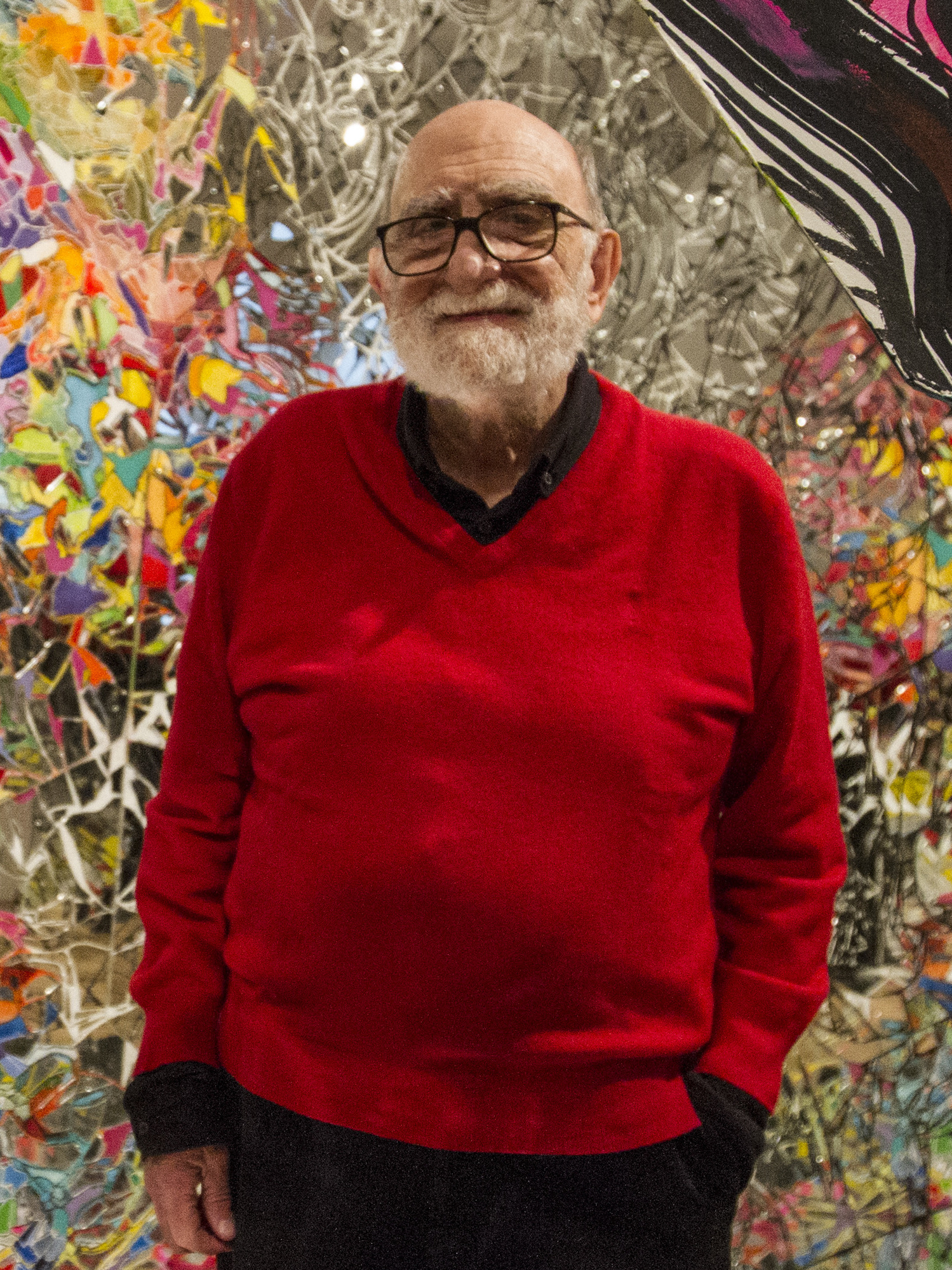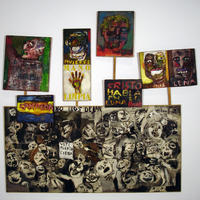More about Luis Felipe Noé
Works by Luis Felipe Noé

Contributor
Luis Felipe Noé worked his entire life against all of the critical and speculative machinery which latches onto the works of artists and turns them into trends, theories, and buzz words.
Critics chew them up like a mother bird before regurgitating them into the squawking mouths of the baby-bird public, who are supposedly unqualified to decide for themselves. Noé became the artist who wrote a theory of art against theories of art, and is famous for his book Antiestetica, "against aesthetics." The path of less resistance would have been to refuse to write anything, and then pay Pat Hackett to ghostwrite for you, like Andy Warhol did, but Noé first put himself out there as an intellectual. He started to regret it when he realized it didn't have the same expressive possibility as art. Sartle is one of the truly rare publications which opens your eyes to artists and works without taking on an authoritarian or pretentious voice, telling you what to think. This is what Noé needed fifty years ago.
Noé says that a 2019 exhibition of his, opened as he neared his ninth decade, shows that "coherence matters very little to me. Coherence is me with all my contradictions." This is a lot more coherent than his seemingly endless theoretical adventures in the art journals of his youth, where he is grappling against a whole host of "-isms," aligning himself with certain ones and against others. It felt necessary for Noé, in those days, to make art a political program, to make a space for an Argentinian art "supported by" an Argentinian theory of Argentinian art, as if art needed a foundation of words to make itself necessary. Eventually, his slogans became more personal and less academic.
As a young man, having abandoned his ambition to become a lawyer, he describes his decision to write art criticism as "irresponsible," because with the cold, analytical gaze of the art critic, he dissected the inspiration of artists, ruining their magic. As an artist himself, he was taking a bigger risk, putting himself in the line of fire in front of the naysayers.
During the Ongánia dictatorship in Argentina, Noé painted images of people destroyed by the brutality of the police state, but then gave up painting for several years. At other times, his art is much harder to analyze in terms of anything occurring outside of his process. Noé chose "chaos" as a slogan, making it into a theme, so that he did not actually need to stick to any theme. Although Benoit Mandelbrot and a host of mathematicians and physicists were organizing chaos theory at the same time, Noé insists that he had no idea that they were doing this; it's another happy accident in his long career. "I am, very much, a Gemini. Sometimes I feel like I'm a whole group of people fighting each other, and the question is, who is the leader?"
Sources
- Aguilar, Carlos. "Argentine-Born Director Gaspar Noé Is Known for His Edgy French Films, But Wants to Make a Movie in Spanish." Remezcla, Mar. 21, 2019, https://remezcla.com/features/film/gasper-noe-climax-interview/.
- Camnitzer, Luis. Conceptualism in Latin American Art: Didactics of Liberation. Austin: University of Texas Press, 2007.
- "The Legacy Project." Archive.org, https://web.archive.org/web/20070819065414/http://www.legacy-project.or….
- "Luis Felipe Noé celebra sus 86 años con una exposición que reúne obras inéditas." Telam, Oct. 27, 2019, https://www.telam.com.ar/notas/201910/403683-luis-felipe-noe-celebra-su….
- Noé, Luis Felipe. "La llamada nueva figuración argentina." Porto Arte, Porto Alegre 9, no. 16 (May 1998): 41-60.
- Vignoli, Beatriz. "Luis Felipe Noé, todo un artista del caos." Aug. 18, 2019, Página 12, https://amp.pagina12.com.ar/212904-luis-felipe-noe-todo-un-artista-del-….
- Willis, Elizabeth. "Work This Thing." Boston Review, Jul. 15, 2015, https://bostonreview.net/poetry/elizabeth-willis-fred-moten-little-edge….
Featured Content
Here is what Wikipedia says about Luis Felipe Noé
Luis Felipe Noé (26 May 1933 – 9 April 2025) was an Argentine artist, writer, intellectual, and teacher. He was known in his home country as Yuyo. In 1961 he formed the group Otra Figuración (Another Figuration) with three other Argentine artists. Their eponymous exhibition and subsequent work greatly influenced the Neofiguration (Neo-figuration/New figuration) movement. After the group disbanded, Noé relocated to New York City, where he created and exhibited assemblages which stretched the boundaries of the canvas.
In 1965 he published his groundbreaking theoretical work, Antiestética. He then took a ten-year hiatus from painting and upon return to Buenos Aires opened a bar, taught, wrote and created installations with mirrors. His painting comeback coincided with the start of Argentina's last military dictatorship (1976-1983), and in 1976 Noé migrated to Paris to escape the dictatorship's widespread persecution and State-sponsored terrorism. In France he continued to experiment, both with canvas re-texturing and the drawing process. His later paintings move away from the figure and focus on elements of landscape.
Noé lived and worked in Buenos Aires, New-York and Paris. His son, Gaspar Noé, is a Franco-Argentine filmmaker. His daughter, Paula, is a painter. He died in Buenos Aires on 9 April 2025, at the age of 91.
Check out the full Wikipedia article about Luis Felipe Noé











